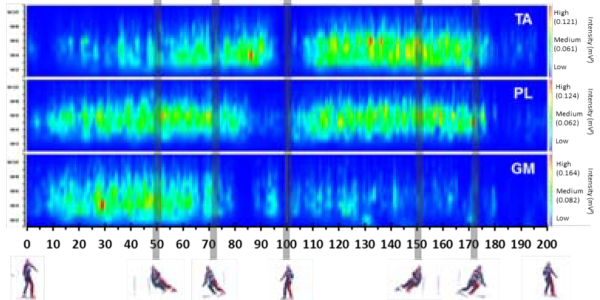If you need a TLDR: my key questions are at the bottom
I’ve been reading threads, trying to learn from the Youtube University, and doing some experiments on my own on the slopes. I understand that our ankle can actually move in SIX different ways, and I think they are all relevant in skiing depending on the situation. (below photos courtesy of crossfit.com)
Inversion/Eversion

Rotation

Dorsiflexion/ Planarflexion

Questions



I’ve been reading threads, trying to learn from the Youtube University, and doing some experiments on my own on the slopes. I understand that our ankle can actually move in SIX different ways, and I think they are all relevant in skiing depending on the situation. (below photos courtesy of crossfit.com)
Inversion/Eversion
- This one is pretty straight forward for me, as it’s the movement needed to engage the edges in a turn. Eversion is for inside edge on outside ski. Inversion is for outside edge of inside ski.
Rotation
- I don’t think of this one as much when carving. But it’s undeniable we are rotating our ankles in all types of skiing, in order to get upper-lower body separation
- For me, this movement becomes a bigger focus though when skiing bumps or more variable terrain (powder, off-piste) because freedom of rotation becomes really obvious when trying to turn with the skis flat (ie. not on edge). In variable terrain, I’m nowhere near good enough to always be using my edge. In powder, it's difficult to feel any edge under my feet!
Dorsiflexion/ Planarflexion
- I’m guessing dorsiflexion is what MOST people here mean when they say ankle flexion, as this is the movement that helps us maintain shin contact on ski boots, or recover if we end up backseat.
- BUTT I’m starting to feel it’s not that simple as one aspires to higher performance skiing. I’m told good skiing no matter the terrain is supposed to be dynamic.
- This is especially stumping me as I’m starting to be told by trainers/instructors to “press” on the ball of my foot to start a turn. The only way I can actually do that is if I use planar flexion on my ankle. I tried doing that on-piste and did feel a tighter turn. I’m wondering if I was really doing planar flexion, or perhaps the feeling was encouraging me to lengthen my outside foot more (ie higher edge angles/ performance).
- In bumps, I didn’t find as much success with planar flexion so still experimenting.
- I’m beginning to feel that planar flexion (or at least the feeling) is the key to unlocking the first half of the turn, as in the part of the arc before the fall line.
Questions
- Is my thought process about the ankle movements and their relevance, correct? I’m especially confused about planar flexion, especially after playing around with it when actually skiing (see above for details)
- In “performance” skiing (carving), there’s a lot of talk about retracting the inside ski RELATIVE to the outside ski (ie outside leg extended, inside leg retracted). But is this idea less relevant in bump and powder skiing? I say this because when I see bump and powder skiiers, I don’t see the high edge angles and relative difference in leg retraction/extension between each leg.

